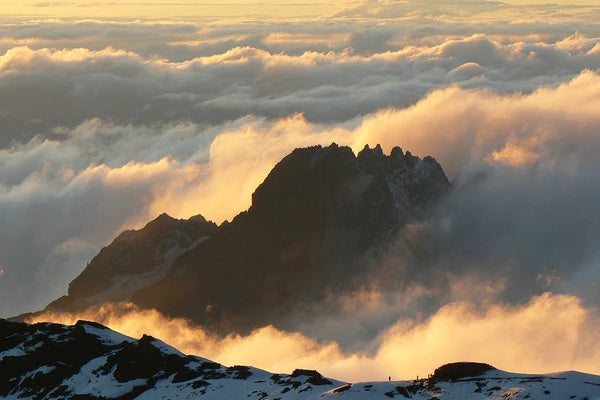
Mt. Kilimanjaro, Tanzania

Kilimanjaro, which translates as “shining mountain” in Swahili, is the highest mountain in Africa at 5895 meters. Although it has never erupted in recorded history, Kilimanjaro is still considered an active volcano. Located near the equator in Tanzania, the summit is covered in snow and ice year round. First climbed in 1887, it is now an increasingly popular destination—both for the magnificent views from the top as for the multitude of glorious savannahs and animal life around it.
ROUTE
There are multiple ways up the mountain varying in length, difficulty and attractivesness. Most trekkers choose the 6-day Marangu or Machame routes but with more time it is possible to enjoy the Rongai, Umbwe or technical Arrow Glacier routes. The summit push is usually timed to begin at midnight to reach the top at daybreak or shortly afterwards.
ACCOMMODATION
The Marangu route has reasonable hut accommodation every night, as well as kitchen and dining sheds and some toilets. The other routes rely on campsites with long drop toilet structures and dining tents. Guides and cook crew are mandatory, and you may as well use the porters too.
HIGHLIGHTS
Summitting the highest mountain in Africa and the highest freestanding volcano in the world, the glaciers shining in the dawn sun (go soon before they disappear), the crew singing you the 'Kilimanjaro song', careening down the scree slope of Kibo Dome.
GUIDE BOOK
Cicerone and Trailblazer both have comprehensive guide books that describe everything about the mountain, but if you want a more entertaining narrative that incorporates Kili as a part of a larger African trip, try This is Not a Holiday by Dan Slater.
WHEN TO GO
Plan to go from June to September to enjoy dryer weather, but open all year round.
GEAR
For a list of products that will help you survive the trek, check our gear list. Or to see the links to the actual products, look at our Mt. Kilimanjaro Collection. Need more advice? See which of our staff have been there on the Where Are You Going? page.

